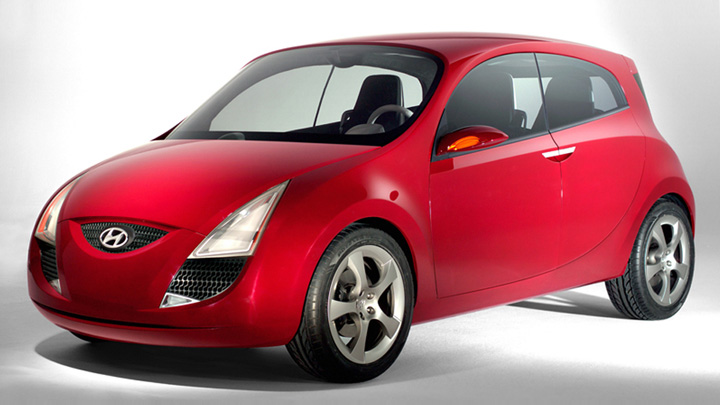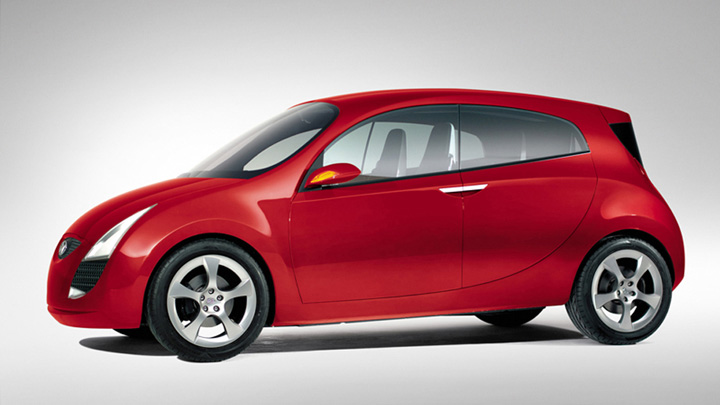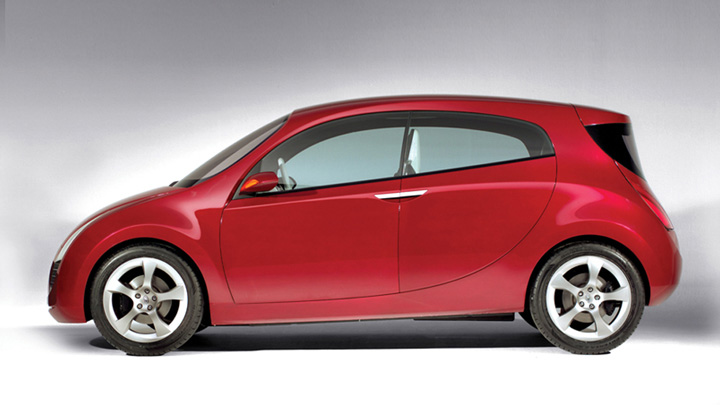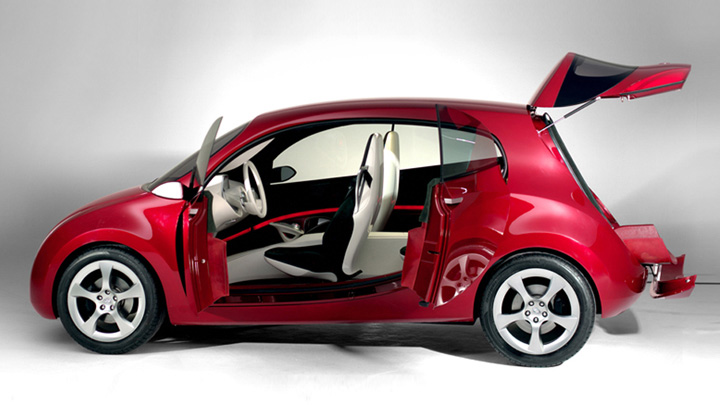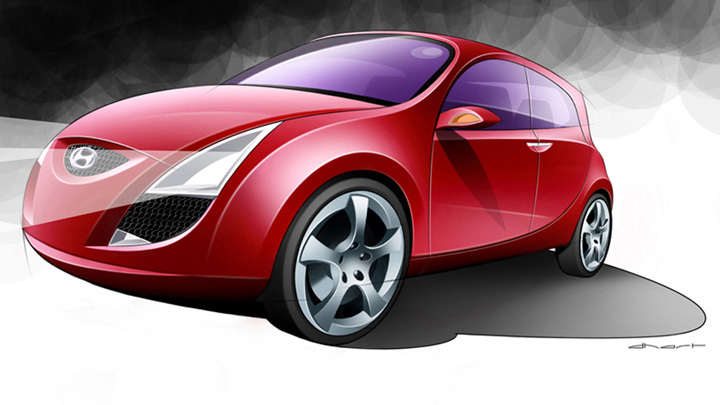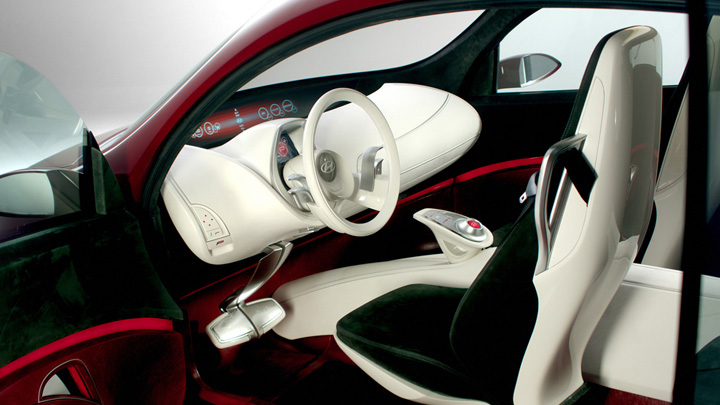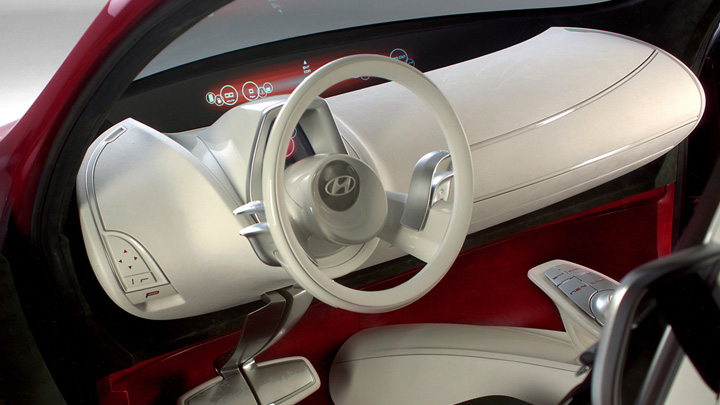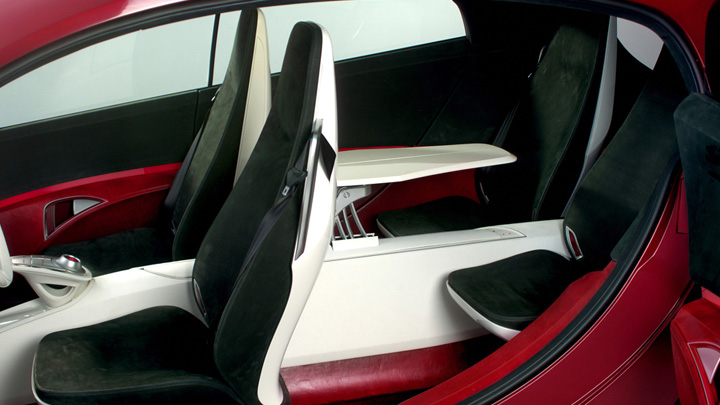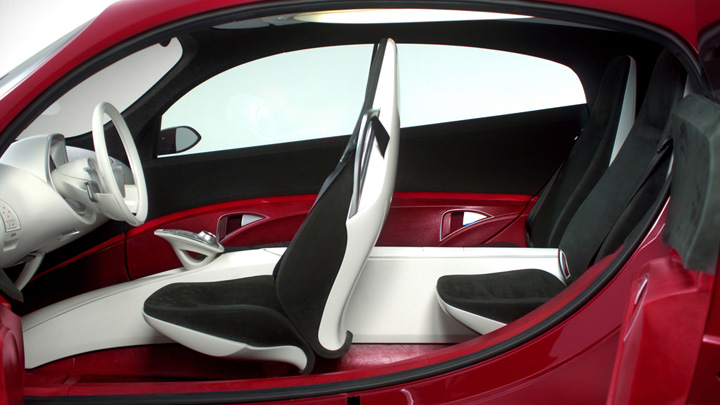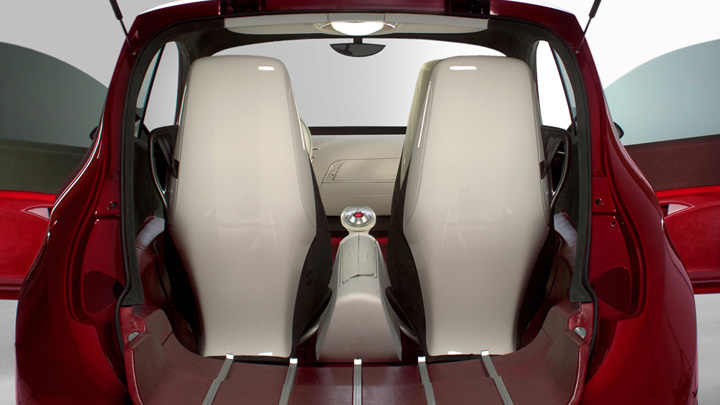A space in which to enjoy all the demands of city living, packed into a B-segment MPV was part of the original concept behind HED-1. Technology and communications were vital elements in this thinking. Between the front seats in the position usually reserved for the gear stick is an interface control column. On it a round selector bearing the Hyundai logo activates all the systems of the car, including the door mounted ambient lighting strips. Above this four different press buttons control entertainment, communications, navigation and climate. Pressing any of them will bring up the appropriate menu on the full width bulkhead screen.
Rotating the selector then allows easy individual menu navigation and selection. Also, as this central control column can be removed and used remotely from any location in the vehicle, it reinforces the social and sharing aspects of the design. One immediate benefit of this is that the rear passengers can easily select their own preferences in terms of climate, communication and entertainment, without having to intrude upon the concentration of the driver or the patience of the front passenger. Another is that any passenger can bring up whatever the driver wishes on the forward screen display, enabling him to fully concentrate on driving. A further social refinement is that both front seats swivel through a full 180 degrees. A folding table rises from the central console and the HED-1 is transformed into mobile conference room, a cocooned and relaxing personal space perfectly suited to elegant picnicking, or whatever the imagination invents or demands. Another ground-breaking feature of the HED-1 is the way the space can be optimized. While the front seats remain firmly positioned, the dashboard and pedals slide for optimum comfort. The rear seats are electrically operated, sliding back or forward to fit the need for space. Maximum luggage space is achieved by sliding them fully forward. The two tier, sliding luggage platform then extends forwards to give more load space. Increasing the rear legroom is merely a matter of sliding the seats backwards. The loading platform then automatically recedes. The flexibility of this design also eases loading, the top tier extending some 250 mm rearwards once the rear sill has been lowered.

